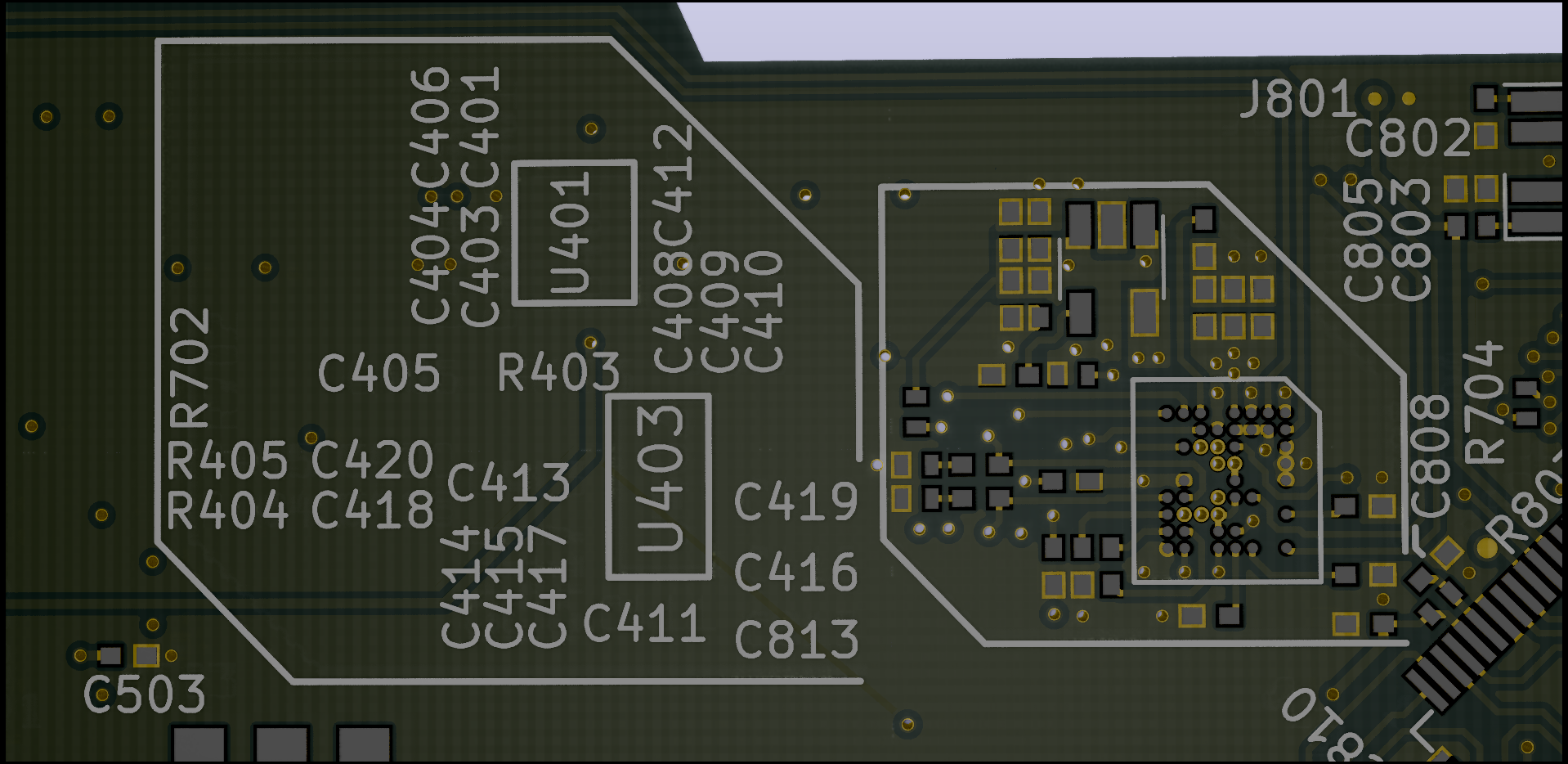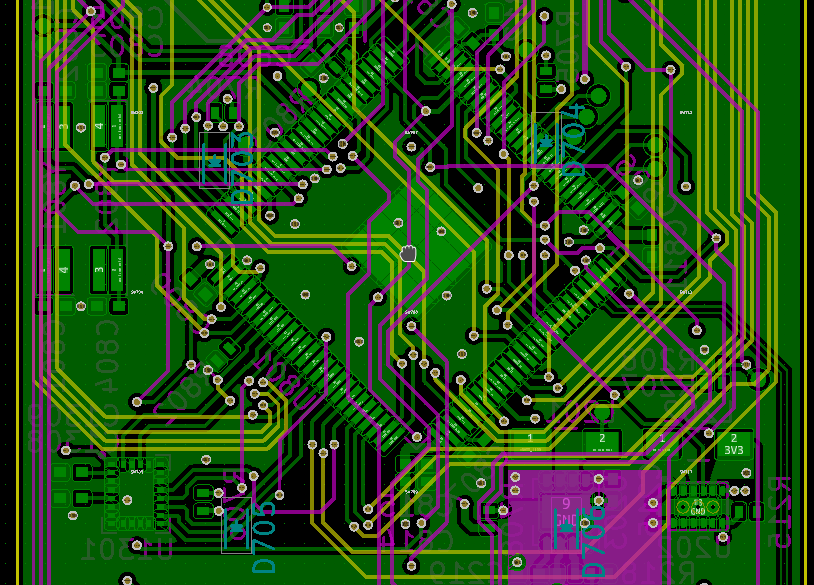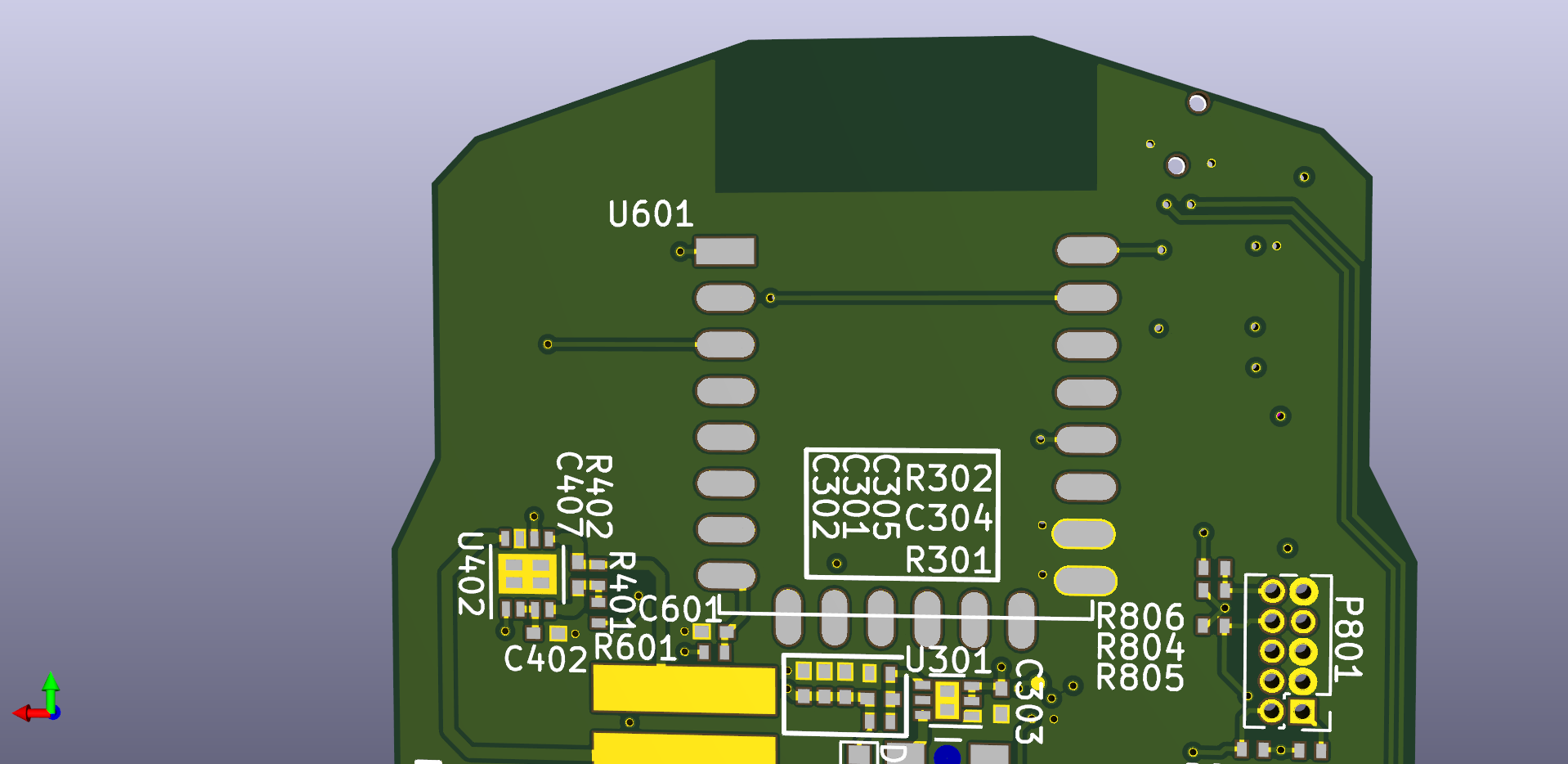Over he weekend I finished laying out the PCB for the phone. It was quite challenging to route all the signals on a rather small board. I decided to go for
- 6 Layers (Signal, Power, Signal, Signal, Ground, Signal)
- 0.2mm track width
- only through hole vias 0.5mm copper / 0.3mm via drill size (some are 0.45mm copper)
That should come to approximately 25€ for a fabricated PCB. So that is acceptable.
There were some tricks necessary though. Here are some 'interesting' parts of the design:

This shows the finished part of the Audio Codec I picked for the i.MX7 project. It does come in a small BGA package ant therefore doesn't need a lot of space. If you work on an HDI board this is no problem. You can probably route a 0.1mm trace through the balls and use micro vias in pad to go to lower layers. Not so for this board. We only have through hole vias. So as we do not need all the balls of the grid we can ignore them, right? Right? OK lets void those pads. There you have it. Enough space to fan out all the remaining signals. We are good to go. Let'S see if this actually does work. Would be a nice hack.

The CPU takes a lot of space on the back side of the board. Compared with the big button pads on the front we have not that much space left for vias. This fanout is very convoluted and is probably way to complicated. But it is connected and should work.

We have two crystals here. One 24MHz for the CPU (goes to 216MHz internally) And another one for 32kHz real time clock. Combined with the GPS signal from the A7 radio module we should always have an accurate time. Nice.

Up here we have the infamous ESP8266 radio module connected to the CPU with UART signals. So we have GPRS and WIFI network connection available.
Now I let the design sit for a few days. Later on I will have a second look at the whole circuit and layout to find some errors before I order the first batch of boards.
 Platinenmacher
Platinenmacher
Discussions
Become a Hackaday.io Member
Create an account to leave a comment. Already have an account? Log In.
Wait, why aren't you using the SDIO slave connection mode for the ESP8266? It's described here #RPi WiFi , has a proper Linux driver, the firmware for ESP8266 - and works very, very well (I've been using it in ZeroPhone for 9 months now). You should have more than one SDIO available on the i.MX7, no?
Are you sure? yes | no
On the i.MX7 I had it connected to SDIO. But in this revision I changed to a STM32 Microconroller with only one SDIO Interface.
Are you sure? yes | no
I used it becaus eI have a bag full of them left from a previous project. And there was not that much of a space constraint in the top section of the board.
I only use the serial pins because I want to use the AT command functionality.
Are you sure? yes | no
I wonder why you used the huge ESP12 module, when modules like ESP03 exist, and you are only using the serial pins?
Are you sure? yes | no